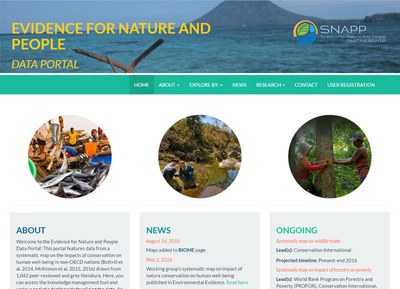Nature is a Treasure Trove for Human Well-being

Meet Dr. Samantha Cheng, of the National Center for Ecological Analysis and Synthesis (NCEAS) at UC Santa Barbara, California. She recently spoke in Washington D.C. at the invitation of the USAID BRIDGE project, which supports the USAID Office of Forestry and Biodiversity. As a post-doctoral research fellow for the Science for Nature and People Partnership (SNAPP) Cheng, with help from other researchers, has launched a new online tool she likens to a treasure hunting tool. What it does is sift through thousands of publications and research articles on topics related to human well-being and nature conservation. Cheng says the need for evidence-based decision making is clear and there are decades-old collections of research worth consulting. But many barriers get in the way of actually tapping into this evidence. “Perhaps the biggest barriers are time, access and ability to efficiently measure the quality of the content,” she says. “Imagine, as one journalist pointed out, a solution to a key environmental problem might be tucked away on a PDF somewhere where nobody can find it,” she added.
The new one-stop-shop tool allows curious minds to seek evidence-based links between conservation interventions and human well-being outcomes such as living standards, livelihoods, health, culture and good governance in their countries. The applications for this tool are many and diverse, not only for decision makers but for researchers, practitioners in all of these sectors and even to civil society actors advocating conservation.
Cheng believes the tool has the potential to change key decisions for global conservation. Actions taken today in order to address environmental challenges will have long-lasting impact. The goal is to support decision making rooted in more than one point a view, but founded on science and evidence.
Check it out at www.natureandpeopleevidence.org


